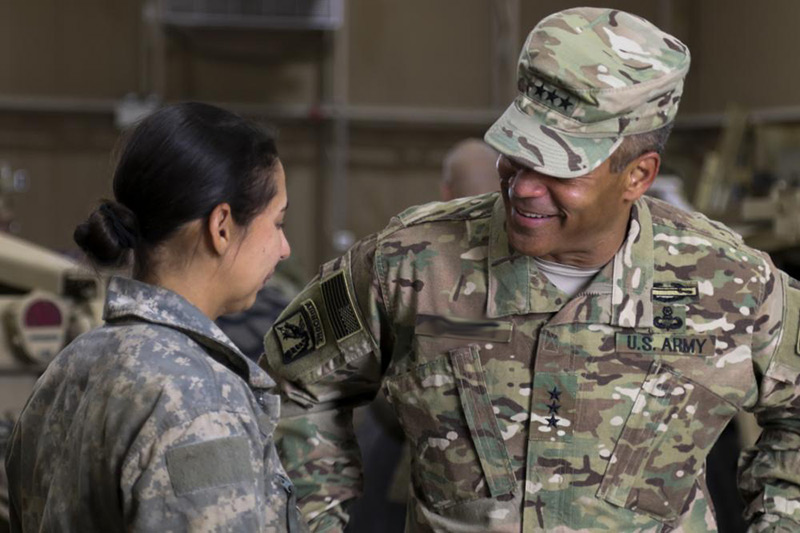Setting the Stage for a Productive Exchange
Now that you’ve learned about three techniques you can use to directly address counterproductive leadership, you’re ready to learn how to use them. To set the stage for a productive exchange, either in the moment or after the fact, you’ll need to pay attention to the conduct and manner of the interaction. You need to be intentional with your demeanor and conscious of how you intend to come across to the leader. The general goal is to communicate in a manner that reestablishes calm in the moment, restores mutual respect, and directs energy to what’s organizationally productive.
1: Defuse the Situation and Establish Mutual Respect and Purpose

As you know, dealing with a leader displaying counterproductive leadership is complex and difficult. When interacting with the leader, you may become flustered and react to his or her comments defensively. Or the leader may make a situation stressful by raising his or her voice. Nothing can be accomplished when discussions turn into yelling matches. To make the encounters more productive and less emotionally charged, begin your exchange by defusing tensions and establishing mutual respect and mutual purpose.
Manage environmental triggers
Control for environmental or contextual triggers by avoiding the leader’s pet peeves and “pushing his or her buttons.” Leverage your previous assessment to understand any triggers the leader may have. Interact with the leader during his or her optimal time of day when information is likely to be received better. Present good news with bad news, and think ahead about solutions to problems.
Defuse tense situations
In very tense situations, often just taking a breath or pause can greatly help to reduce the tension. Take a moment (and a deep breath) and acknowledge the leader’s emotion. Express regret for any potential misunderstanding of your position or words, then clarify what you were trying to communicate. This approach can help to reduce tension and create a more relaxed atmosphere and environment of openness.
Establish mutual respect through active listening
Establishing mutual respect reduces miscommunication and allows the speaker to feel respected and appreciated. Consider your verbal and nonverbal behavior; both are important. Give the person your full attention; maintain appropriate eye contact; provide signals that you’re listening (e.g., nod head, say “I see”); actually listen (i.e., don’t prepare your next response while listening to the person); adopt a relaxed, open posture; never roll your eyes, make patronizing comments, or smirk; avoid inappropriate humor.
Establish mutual purpose
Some people find others difficult to work with if they believe they’re not working toward the same goal. When talking to the leader, demonstrate that you want the same outcome as him or her. Clarify that your intent is to ensure a positive and productive work environment; you’re not out to hurt or undermine the leader. Start with what’s important to you AND the leader, and focus on the desired outcomes and the bigger picture (e.g., unit performance, career development, next upcoming promotion). Then give the leader a chance to respond to it. This open dialogue helps prevent the leader from feeling threatened and increases the leader’s openness to your suggestions.
2: Address the Situation Respectfully

Next, consider how to address the situation as respectfully as possible so that the leader remains receptive and open.
Ask for permission to discuss difficult topics
Asking for permission may seem like a small action, but it’s actually a powerful sign of respect that can help to de-escalate contentious, prickly, or difficult situations. It’s especially useful for delicate topics, like discussing counterproductive leadership. For instance, you might use any of the following statements to ask permission of the leader you’re working with: “Can I discuss XYZ with you?” “Would it be possible to talk about what happened in the meeting/our interaction the other day?”
Practice facilitation techniques
Asking the right types of questions is critical to creating an open discussion with a leader. As you conduct the conversation, focus on hearing the message. Don’t plan what you are going to say next. After the leader makes a point, clarify your understanding by restating or paraphrasing what you heard from the leader, then confirm that it’s correct. It’s okay to pause if you need to gather your thoughts. Reflect on the leader’s feelings as he or she shares his or her perspective. For instance, say, “I can see how important this is to you.” Summarize the major points of the discussion as you proceed.
Use contrasting language to clarify your intent
As you conduct the conversation, even if you clarified your intent at the beginning, the leader may continue to question your motives. If you sense this is occurring, clarify using the contrasting technique, meaning you explain what you DO NOT mean followed by what you DO mean.
3: Redirect Rationalizations and Emotions

During conversations with leaders who exhibit counterproductive leadership, you may find that they rationalize their behaviors; in other words, leaders may make excuses or try to explain away what they did. This is a normal reaction and can open the door to further discussion. Expect these rationalizations and be prepared to explore them or redirect the conversation when they’re used.
Address rationalizations
Address the “yeah-buts” or rationalizations that the leader may provide as explanations for his or her behavior. This is a normal response and can include insightful detail into the leader’s intentions behind their behavior. This can be done by exploring faulty either/or thinking (e.g., “Either I yell at this subordinate or he isn’t going to perform”) and presenting smart alternatives to counterproductive behaviors. The leader may respond to your suggestions with resistance (e.g., “Yeah I see what you’re saying, but that won’t work in my unit because of XYZ”). However, you can continue to support your opinion with logical reasoning and additional alternatives to help him or her see how they can be applied to the situation.
Recognize emotional reactions to feedback
When thinking about how emotions might impact the interaction, recognize that people may initially resist negative feedback. That doesn’t mean they won’t ever accept the feedback, but it does mean that they may need time to process it first. Given this, it can be useful to hit the “pause” button and continue the conversation later, especially if emotions are running high or the interaction is in a group setting.
Remain calm
Remaining calm yourself in such situations is critical and often difficult, especially when stress and emotions are running high. Speak slowly and calmly. Lower your vocal tone and use non-threatening language. Take deep breaths.